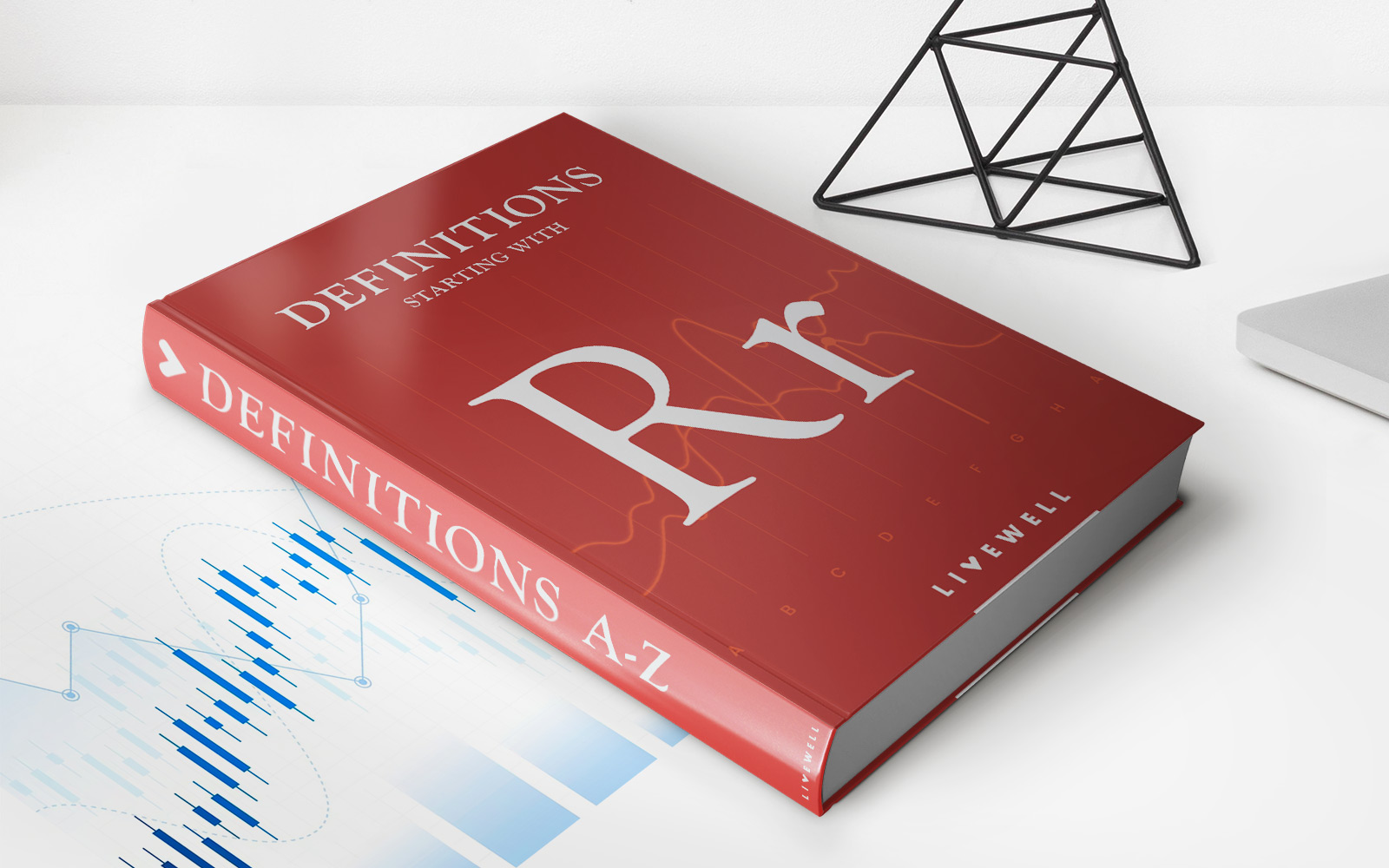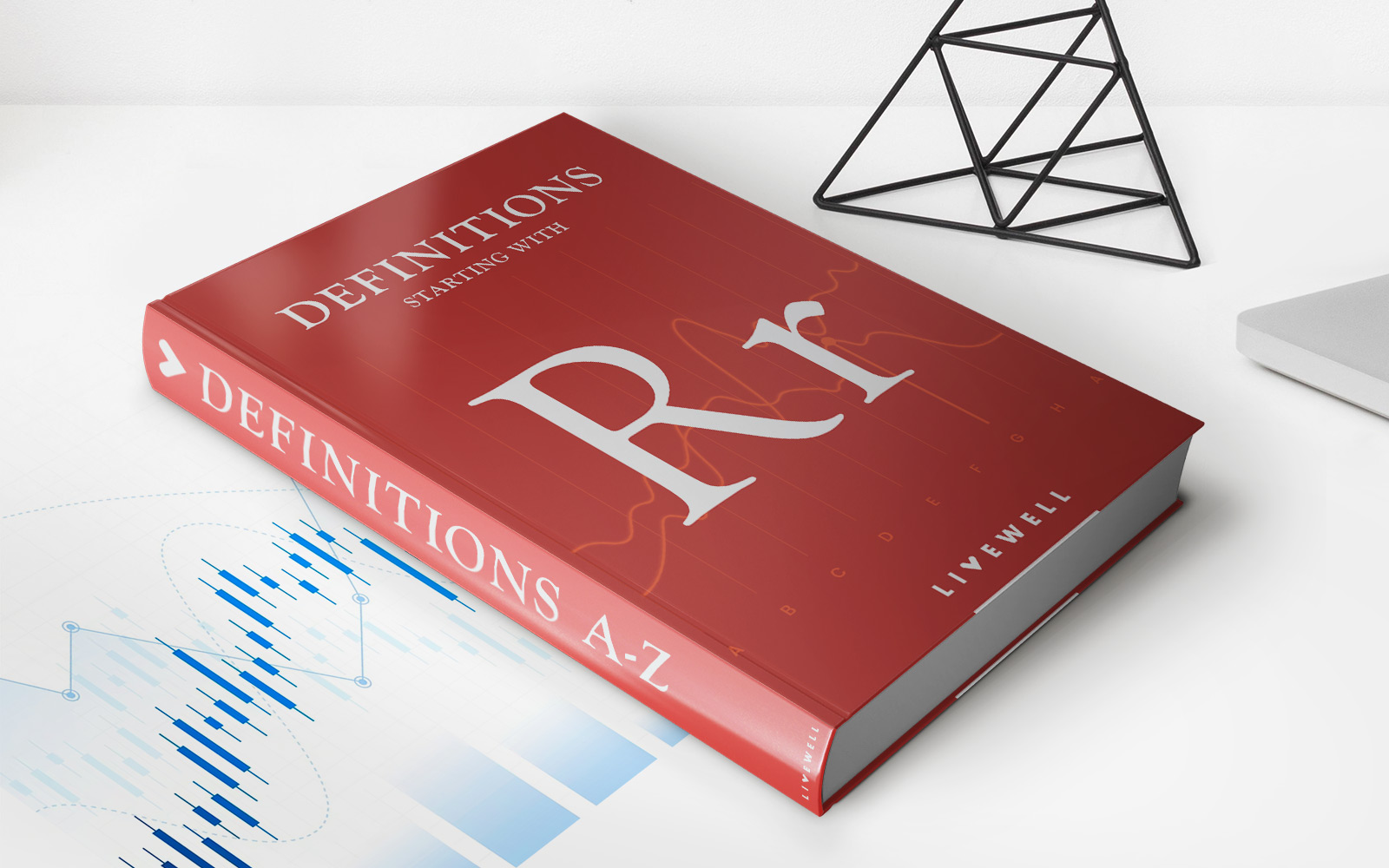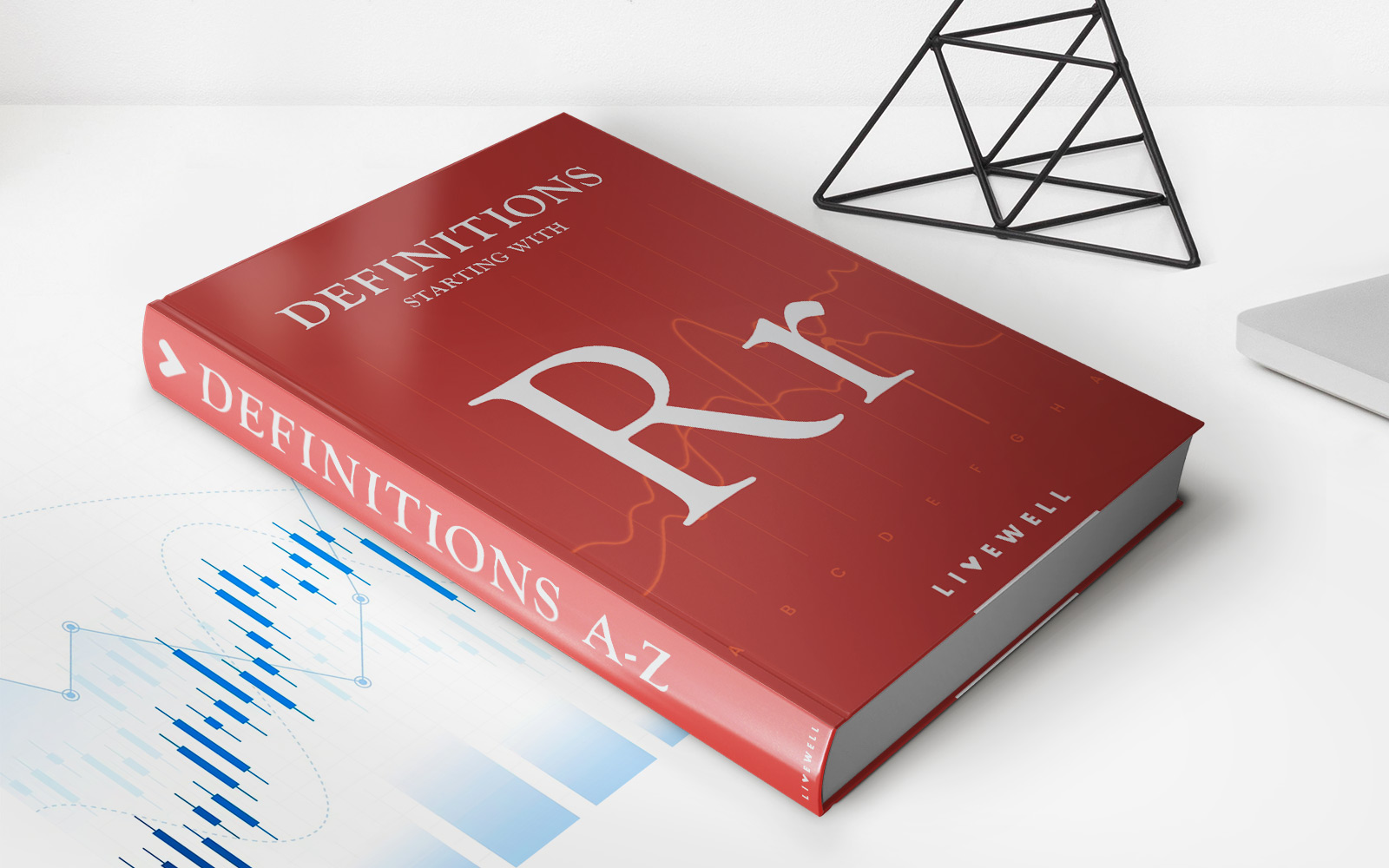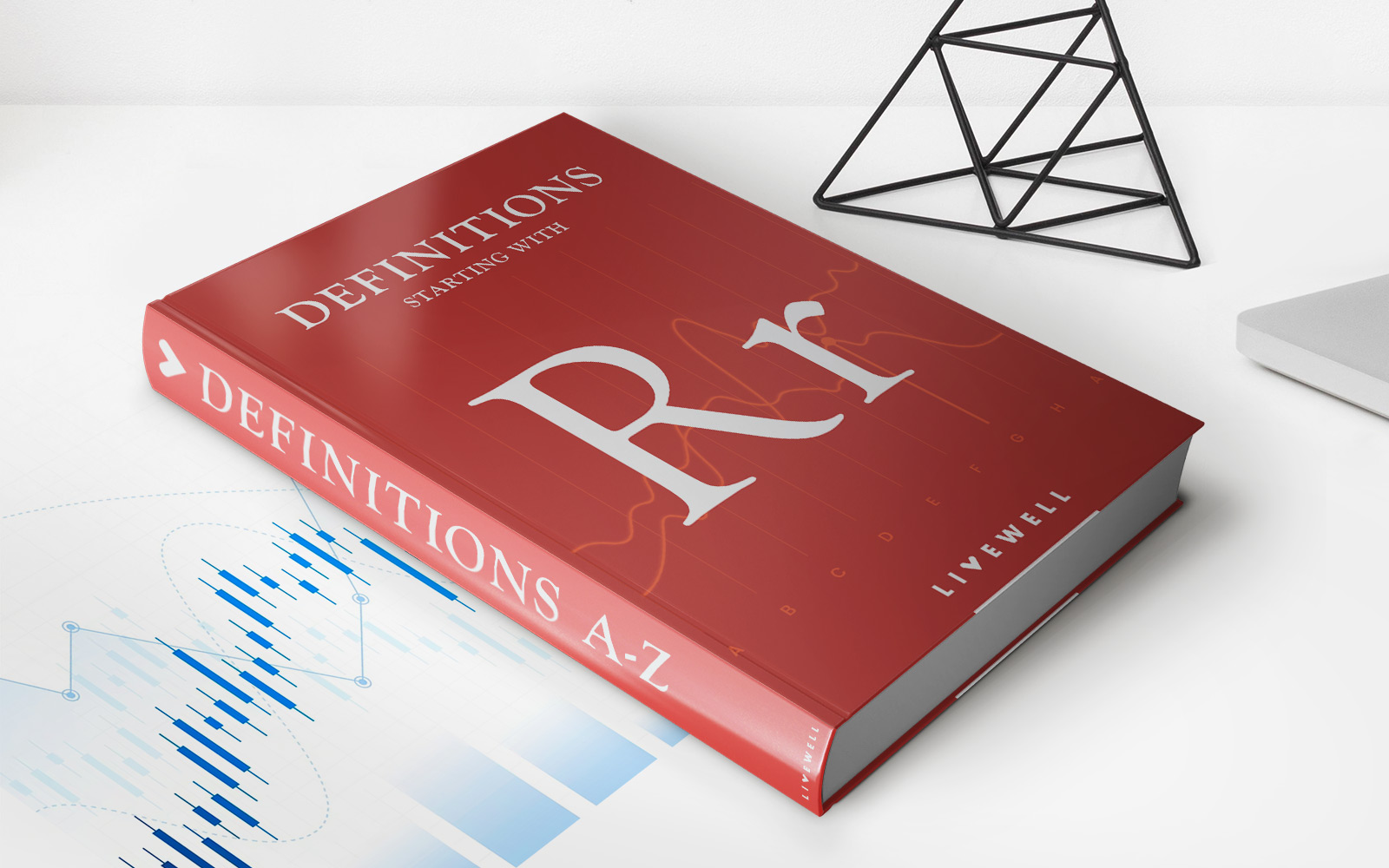Home>Finance>Why Does The Loanable Funds Market Use Real Interest Rates?


Finance
Why Does The Loanable Funds Market Use Real Interest Rates?
Published: November 2, 2023
Explore the significance of real interest rates in the loanable funds market and understand why finance professionals rely on them for making informed decisions.
(Many of the links in this article redirect to a specific reviewed product. Your purchase of these products through affiliate links helps to generate commission for LiveWell, at no extra cost. Learn more)
Table of Contents
- Introduction
- What is the loanable funds market?
- Definition and explanation of real interest rates
- Reasons for using real interest rates in the loanable funds market
- Relationship between real interest rates and inflation
- Benefits of using real interest rates in the loanable funds market
- Criticisms and limitations of using real interest rates in the loanable funds market
- Conclusion
Introduction
The loanable funds market is an important component of the overall financial system. It acts as a platform where borrowers and lenders come together to determine the interest rates at which funds can be borrowed or lent. In this market, interest rates play a crucial role in determining the allocation of funds and influencing economic activity.
However, it is important to note that there are different types of interest rates that can be used in the loanable funds market. One specific type that is frequently utilized is the real interest rate. Real interest rates are adjusted for inflation and reflect the purchasing power of money. This article will delve into why the loanable funds market uses real interest rates and the implications of this decision.
By understanding the concept of real interest rates and its significance in the loanable funds market, individuals can gain a deeper insight into the workings of the financial system and make informed decisions regarding borrowing and lending. Additionally, comprehending the relationship between real interest rates and inflation can provide valuable information to policymakers and economists in their efforts to manage and stabilize the economy.
What is the loanable funds market?
The loanable funds market, also known as the credit market, is a marketplace where individuals, businesses, and governments can borrow or lend money. It serves as a mechanism to allocate funds efficiently between lenders and borrowers. In this market, borrowers seek to access funds to finance investments, projects, or general expenditures, while lenders aim to earn a return on their surplus capital.
The loanable funds market operates on the basic principle of supply and demand. The supply of funds comes from individuals or entities with excess capital who are willing to lend it out. The demand for funds arises from individuals, businesses, and governments who need capital to invest or finance their activities.
Interest rates play a vital role in the loanable funds market as they determine the cost of borrowing and the return on lending. When the demand for funds is high relative to the supply, interest rates tend to rise, indicating that borrowers are willing to pay a higher price for access to capital. Conversely, when the supply of funds exceeds the demand, interest rates decrease as lenders compete to attract borrowers.
The loanable funds market operates through both financial intermediaries such as banks, credit unions, and lending institutions, as well as direct lending between individuals or businesses. Financial intermediaries act as facilitators, pooling funds from multiple lenders and extending credit to borrowers. This intermediation process helps to increase the efficiency of the market by reducing transaction costs and providing a channel for risk diversification.
Overall, the loanable funds market plays a crucial role in allocating resources efficiently within the economy. It enables borrowers to access capital to fund investment and spur economic growth, while allowing lenders to earn a return on their savings or surplus funds. By understanding the dynamics of this market and the factors influencing interest rates, individuals and businesses can make informed decisions regarding borrowing and lending.
Definition and explanation of real interest rates
Real interest rates are a concept used in economics to measure the true cost of borrowing or the return on lending after accounting for inflation. Unlike nominal interest rates, which are the stated rates without adjusting for inflation, real interest rates take into consideration changes in purchasing power.
To understand real interest rates, it is important to grasp the concept of inflation. Inflation refers to the general increase in prices of goods and services over time. When inflation occurs, the value of money decreases, and it takes more money to purchase the same amount of goods or services.
The formula for calculating real interest rates is as follows:
Real Interest Rate = Nominal Interest Rate – Inflation Rate
Let’s take an example to illustrate the concept. Suppose you invest $1,000 in a bond that offers a nominal interest rate of 5% per year. However, during the same period, inflation is at 2%. By subtracting the inflation rate from the nominal interest rate, we can calculate the real interest rate as follows:
Real Interest Rate = 5% – 2% = 3%
This means that after accounting for inflation, the actual return on your investment is 3%. In other words, your purchasing power has increased by 3% over the investment period.
Real interest rates are essential because they provide a more accurate picture of the cost of borrowing or the return on lending. By adjusting for inflation, real interest rates allow borrowers and lenders to make informed decisions regarding their financial activities.
In practice, central banks and policymakers closely monitor real interest rates to gauge the health of the economy. High real interest rates could indicate tight monetary conditions, meaning borrowing becomes expensive and may potentially slow down economic growth. Conversely, low real interest rates can stimulate borrowing and economic activity, as the cost of borrowing is relatively inexpensive.
Understanding real interest rates empowers individuals and businesses to make more informed financial decisions. It enables them to evaluate the potential return on investments, assess borrowing costs accurately, and adjust their financial strategies accordingly in response to changing economic conditions.
Reasons for using real interest rates in the loanable funds market
The loanable funds market relies on real interest rates as a key metric for several reasons. Understanding these reasons can provide insights into the functioning of the market and its impact on borrowers, lenders, and the overall economy.
1. Accounting for inflation:
Real interest rates adjust for inflation, allowing borrowers and lenders to accurately assess the true cost of borrowing and the return on lending. Inflation erodes the purchasing power of money over time, and by using real interest rates, the loanable funds market ensures that lenders are adequately compensated for the decrease in value and borrowers are aware of the actual cost.
2. Proper risk assessment:
Real interest rates enable lenders to assess the risk associated with lending funds. By factoring in inflation, lenders can determine whether the return on their investment adequately compensates for the anticipated loss in purchasing power over the loan’s duration. This helps lenders make informed decisions and manage their risk exposure in the loanable funds market.
3. Facilitating economic decision-making:
Real interest rates provide borrowers and lenders with crucial information for making investment decisions. When real interest rates are low, borrowing costs decrease, stimulating investment and economic activity. Conversely, high real interest rates act as a deterrent to borrowing, potentially slowing down investment and economic growth. Real interest rates thus play a significant role in shaping economic decisions and influencing the overall economy.
4. Monetary policy tool:
Central banks and policymakers use real interest rates as a policy tool to manage the economy. By adjusting real interest rates, central banks can influence borrowing levels, consumption, and investment, thereby controlling inflation and stabilizing the economy. Lowering real interest rates can stimulate economic growth, while raising them can help curb inflationary pressures.
5. International comparisons:
Real interest rates provide a standardized measure that facilitates international comparisons. By adjusting for inflation, it allows for a more accurate comparison of the cost of borrowing and the return on lending across different countries with varying inflation rates. This enables investors to make more informed decisions regarding global investments and capital allocation.
Overall, real interest rates serve as a vital tool in the loanable funds market, enabling borrowers, lenders, policymakers, and investors to make informed decisions. By accounting for inflation and providing a more accurate representation of borrowing costs and returns, real interest rates contribute to the efficient allocation of resources and the stability of the financial system.
Relationship between real interest rates and inflation
The relationship between real interest rates and inflation is a crucial aspect of the loanable funds market and has significant implications for borrowers, lenders, and the overall economy. Understanding this relationship is key to making informed financial decisions and assessing the impact of inflation on the cost of borrowing and the return on lending.
Inflation erodes the purchasing power of money over time, causing prices of goods and services to rise. When there is inflation, nominal interest rates may also rise to compensate for the decrease in the value of money. However, the relationship between nominal interest rates and inflation is not always straightforward, as it does not necessarily reflect the actual cost of borrowing or return on lending.
The real interest rate adjusts for inflation and provides a more accurate representation of the true cost of borrowing or the return on lending. When inflation is higher than nominal interest rates, real interest rates become negative, indicating that the purchasing power of money is decreasing faster than the returns generated by lending or investments. In this scenario, lenders may be reluctant to lend funds, as they could end up with a lower purchasing power in the future.
Conversely, when the inflation rate is lower than the nominal interest rate, real interest rates are positive. This suggests that the return on lending or investment exceeds the rate of inflation, providing lenders with a gain in purchasing power. Positive real interest rates may incentivize lending and borrowing, as they indicate that borrowers can access funds at a cost lower than the expected gain from their investments.
The relationship between real interest rates and inflation has important implications for different stakeholders:
1. Borrowers:
Borrowers are concerned with the actual cost of borrowing, considering the impact of inflation. When inflation is high, the real interest rate tends to increase, making borrowing more expensive. On the other hand, when inflation is low, borrowers may benefit from lower real interest rates, reducing the cost of borrowing and making it more affordable to finance investments or expenditures.
2. Lenders:
Lenders evaluate the return on lending by considering inflation. If inflation outpaces nominal interest rates, lenders may experience a decrease in purchasing power over time. Lenders could be more hesitant to lend funds when real interest rates are negative, as their returns would not adequately compensate for the loss in purchasing power caused by inflation. Positive real interest rates, on the other hand, provide incentives for lenders and may drive increased lending activity.
3. Investors:
Investors, especially those investing in fixed-income securities such as bonds, closely monitor the relationship between real interest rates and inflation. Higher inflation with low real interest rates negatively affects the real returns on fixed-income investments, whereas low inflation with positive real interest rates can enhance real returns. Investors need to factor in the anticipated inflation rate to assess the potential value of their investments.
Central banks and policymakers also consider the relationship between real interest rates and inflation in their monetary policy decisions. They aim to manage inflation and stabilize the economy by adjusting real interest rates. Lowering real interest rates can stimulate borrowing and spending, potentially leading to increased economic activity. Raising real interest rates, on the other hand, can help curb inflationary pressures by making borrowing more expensive and reducing spending.
Understanding the relationship between real interest rates and inflation is essential for borrowers, lenders, investors, and policymakers. It enables individuals and institutions to make informed financial decisions, manage risks, and adapt strategies based on current and anticipated inflationary trends.
Benefits of using real interest rates in the loanable funds market
The use of real interest rates in the loanable funds market provides several benefits that enhance the efficiency and effectiveness of the financial system. These benefits have implications for borrowers, lenders, policymakers, and the overall economy.
1. Accurate cost of borrowing and return on lending:
Real interest rates adjust for inflation, providing a more accurate measure of the actual cost of borrowing and the return on lending. By accounting for changes in purchasing power, real interest rates allow borrowers and lenders to make informed financial decisions, considering the impact of inflation on the value of money over time. This ensures that borrowing costs accurately reflect the true economic cost for borrowers and that lenders are adequately compensated for lending funds.
2. Informed investment decisions:
Real interest rates play a vital role in guiding investment decisions. By factoring in inflation, real interest rates provide investors with valuable information on the potential purchasing power of their returns. This empowers individuals and businesses to make informed investment decisions, helping allocate capital to projects and initiatives that are expected to generate positive real returns over time.
3. Effective monetary policy tool:
Central banks and policymakers rely on real interest rates as a crucial tool for implementing monetary policy. By adjusting real interest rates, policymakers can influence borrowing costs, stimulate or control economic activity, and manage inflation. Real interest rates provide a more accurate picture of the economic conditions by considering inflation, enabling policymakers to make informed decisions regarding interest rate adjustments to stabilize the economy.
4. International comparability:
Real interest rates allow for meaningful international comparisons by providing a standardized measure of borrowing costs and returns. Adjusting for inflation allows investors to compare rates in different countries, considering the impact of inflation on the value of money. This enables individuals and institutions to make informed decisions regarding international investments and diversify their portfolios globally.
5. Transparent borrowing and lending market:
By utilizing real interest rates, the loanable funds market promotes transparency and fairness. Real interest rates enable borrowers and lenders to assess the true economic cost of borrowing and return on lending, ensuring that participants have access to accurate information while making financial decisions. This fosters trust and efficiency within the lending and borrowing market.
In summary, the use of real interest rates in the loanable funds market brings significant benefits. It allows for accurate pricing of borrowing costs and returns, supports informed investment decisions, provides an effective monetary policy tool, enables meaningful international comparisons, and enhances transparency within the market. These benefits contribute to the efficient allocation of capital, stable economic growth, and the overall functionality of the financial system.
Criticisms and limitations of using real interest rates in the loanable funds market
While the use of real interest rates in the loanable funds market provides valuable insights and benefits, it is important to acknowledge the criticisms and limitations associated with this approach. Understanding these criticisms can shed light on the complexities of the financial system and inform discussions on alternative measures and considerations.
1. Measurement accuracy:
Calculating real interest rates requires accurate measurement and estimation of inflation rates. However, accurately measuring inflation can be challenging, as it involves tracking and aggregating price changes across various goods and services. Inaccurate inflation measurements can result in misrepresentation of real interest rates, potentially distorting borrowing costs and returns.
2. Future inflation uncertainty:
The use of real interest rates assumes a known future inflation rate. However, predicting future inflation accurately can be difficult due to various factors such as economic conditions, policy decisions, and external shocks. Uncertainty surrounding future inflation rates can introduce volatility and risk into borrowing and lending decisions based on real interest rates.
3. Subjectivity of inflation expectations:
Expectations of future inflation may vary among market participants. Individuals and institutions may hold divergent views on future inflation trends, impacting their borrowing and lending decisions. These differing expectations can introduce biases and limit the effectiveness of real interest rates as a measure of borrowing costs and returns.
4. Ignoring other risk factors:
Real interest rates primarily focus on inflation as a risk factor while ignoring other risks associated with borrowing and lending. Factors such as credit risk, market volatility, and liquidity constraints can significantly impact the cost of borrowing and the return on lending. Relying solely on real interest rates may fail to capture these additional risks and limitations.
5. Distributional effects:
The use of real interest rates may have distributional effects, as different segments of society experience inflation and borrowing costs differently. For example, low-income individuals may face higher inflation rates for essentials such as food and housing, while higher-income individuals may have access to lower borrowing costs due to their financial standing. Real interest rates may not capture these nuances and can inadvertently exacerbate income inequality.
6. Complex economic dynamics:
The relationship between real interest rates and borrowing behavior is not always straightforward. Economic conditions, investor sentiment, and financial market dynamics can influence borrowing and lending decisions beyond the realm of real interest rates. Focusing solely on real interest rates may oversimplify the complex interactions within the loanable funds market.
Recognizing the criticisms and limitations of using real interest rates in the loanable funds market is essential for a comprehensive understanding of the financial system. While real interest rates offer valuable insights, they should be considered alongside a broader set of indicators and risk factors to ensure robust decision-making and an accurate assessment of borrowing costs and returns.
Conclusion
The use of real interest rates in the loanable funds market has proven to be a valuable tool for borrowers, lenders, policymakers, and investors. Real interest rates account for inflation, providing a more accurate measure of the actual cost of borrowing and the return on lending. They enable informed financial decisions by considering the impact of inflation on the value of money over time.
By utilizing real interest rates, borrowers can accurately assess the cost of borrowing, lenders can evaluate the return on lending, and investors can make informed investment decisions based on anticipated returns adjusted for inflation. Real interest rates also serve as an effective monetary policy tool, helping central banks and policymakers manage inflation and stabilize the economy.
However, it is important to acknowledge the criticisms and limitations associated with real interest rates. These include challenges in accurately measuring inflation, uncertainties surrounding future inflation rates, subjectivity of inflation expectations, and the exclusion of other risk factors. Additionally, real interest rates may have distributional effects and oversimplify the complexities of the loanable funds market.
In conclusion, while real interest rates provide valuable insights and benefits, they should be considered alongside other indicators and risk factors to ensure comprehensive decision-making. Understanding the relationship between real interest rates and inflation is essential for borrowers, lenders, policymakers, and investors to navigate the loanable funds market effectively. By recognizing the strengths and limitations of real interest rates, stakeholders can make more informed financial decisions, allocate capital efficiently, and contribute to the stability and growth of the economy.














